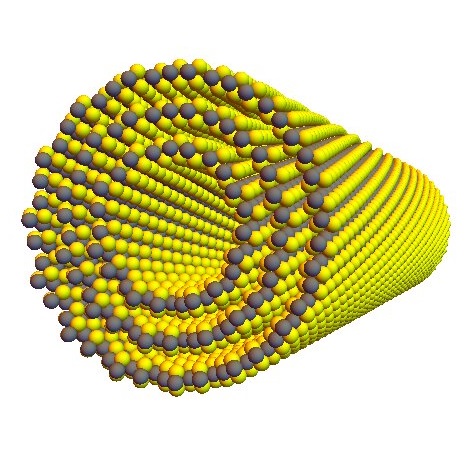Nanotechnology sounds like science-fiction to many, but recent studies are making it a viable reality. Researchers at the University of Tokyo, alongside other international research groups, have discovered a new nanosized material that can help generate electricity more efficiently.
The new material is tungsten disulfide, which — when wrapped into a cylindrical tube — creates a better flow for electricity because of its natural shape.
When exposed to light, the material creates a photovoltaic effect and creates electricity. A photovoltaic effect is essentially the conversion of light to electricity. This reaction is similar to what happens in solar panels.
Currently, researchers are exploring whether nanotube may be used to enhance solar panels and create a more effective source of electricity. Additionally, in another research group by the University of Kansas, graphene was used to create solar cells and test their endurance. Graphene is regarded to be the lightest yet strongest material made of carbon and conducts electricity.
When tested against other materials such as tungsten disulfide and molybdenum disulfide, graphene showed a 400% improvement in current retainment. What this means is that graphene, in combination with tungsten disulfide, maintained the conduction of electricity for a longer amount of time than other materials.
A big constraint however is the material’s size. With the nanotube being at a nanoscopic level, the tube cannot produce enough electricity to be useful. However, if the size limitations are overcome through more investigation, researchers claim that the technology can be used to power batteries and photovoltaic equipment.
The future looks bright with new implementations of materials such as graphene and tungsten disulfide. With solar panels becoming more common, the research being conducted with nanotubes could benefit our sources of energy long-term.
According to the Center for Climate and Energy Solutions , the U.S is estimated to have 36% of its total renewable electricity come from solar power. In comparison to only 7% of its total renewable electricity being solar in 2015, the United States is showing an increasing demand for this new source of electricity.
According to the Solar Energy Industries Association, solar energy is becoming more commonplace as a form of electricity and field of employment. SEIA claims “over 242,000 Americans work in solar.” It is beneficial to understand the effects of an industry on the common person and the potential that the solar energy industry still has.
Research from groups like the University of Tokyo, greatly dictate where the future could be headed. SEIA also claims that solar residential systems have become much cheaper over the past nine years, from an initial cost of 40,000 dollars in 2010 down to 18,000 dollars in 2019.
While the idea of improvements on solar energy sounds like a perfect scenario, it is also important to know the risks and effects from these systems.
According to the Union of Concerned Scientists, the storage for solar energy consumption is costly. Concentrating solar plants are a form of storing solar energy for use later by converting solar energy into heat energy and finally into electricity. For CSPs to work most efficiently, they would have to be placed in areas where sunlight is at its brightest, like deserts.
The problem with CSP is the massive amounts of water used to cool the plants, which counteracts the placement of the CSPs in deserts. Another big issue with solar panels is the manufacturing of the parts.
The UCS claims that workers face the possibility of inhaling silicon dust and other hazardous chemicals. It is true that solar energy produces no harmful emissions but the manufacturing process still produces harmful carbon dioxide which constitutes a greenhouse gas emission.
Solar-powered cities and homes could be common in the upcoming future with the current research on nanotechnology.
With the new nanotube material, it is very likely that more researchers will surpass the limitations of the size. Phones, laptops and schools could all be powered by this new material and hence make this study one of the most crucial for our generation.








